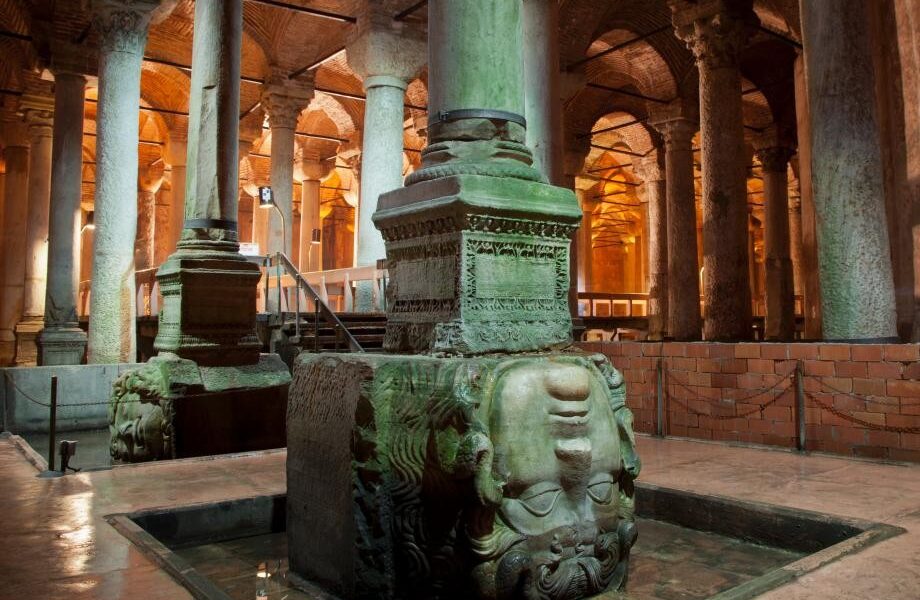The Basilica Cistern, or Cisterna Basilica, is the largest of several hundred ancient cisterns that lie beneath the city of Constantinople (Istanbul), Turkey.
The cistern, located 150 metres (490 ft) southwest of the Hagia Sophia on the historical peninsula of Sarayburnu, was built in the 6th century during the reign of Eastern Roman (Byzantine) Emperor Justinian I. Today it is kept with little water, for public access inside the space.

This subterranean cistern, in Greek kinsterne (κινστέρνη), was called Basilica because it was located under a large public square on the First Hill of Constantinople, the Stoa Basilica.
At this location, and prior to constructing the cistern, a great Basilica stood in its place, built between the 3rd and 4th centuries during the Early Byzantine period as a commercial, legal and artistic centre. The basilica was reconstructed by Illus after a fire in 476.

Ancient texts indicated that the basilica contained gardens, surrounded by a colonnade and facing the Hagia Sophia. According to ancient historians, Emperor Constantine built a structure that was later rebuilt and enlarged by Emperor Justinian after the Nika riots of 532, which devastated the city.
Historical texts claim that 7,000 slaves were involved in the construction of the cistern.
The enlarged cistern provided a water filtration system for the Great Palace of Constantinople and other buildings on the First Hill, and continued to provide water to the Topkapı Palace after the Ottoman conquest in 1453 and into modern times.
Located in the northwest corner of the cistern, the bases of two columns reuse blocks carved with the visage of Medusa. The origin of the two heads is unknown, though it is thought that the heads were brought to the cistern after being removed from a building of the late Roman period.

There is no written evidence that suggests they were used as column pedestals previously. Tradition has it that the blocks are oriented sideways and inverted in order to negate the power of the Gorgons' gaze; however, it is widely thought that one was placed sideways only to be the proper size to support the column.

This would not explain placement of the upside-down Medusa, however, because she would be the same height right side up.
READ MORE: Greeks may have helped build China's famous Terracotta Army.


